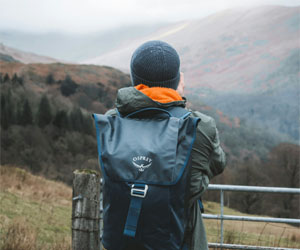


The Art Of Riding The Waves
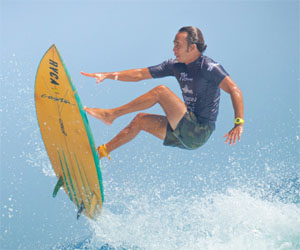
Surfing, often referred to as the "sport of kings," is a dynamic water activity that has evolved into a globally recognized sport over the years. While many might associate surfing with leisure and lifestyle, it's important to recognize the athleticism, skill, and competitive aspects that define surfing as a legitimate sport. In this article, we will explore surfing as a sport and the elements that make it a thrilling and demanding pursuit.
The Physical Demands: Surfing is an incredibly physically demanding sport. Surfers must paddle out against the force of incoming waves, which can be strenuous. Paddling requires upper body strength and endurance, making surfers some of the fittest athletes. Additionally, maintaining balance on the board, performing maneuvers, and navigating the waves necessitate core strength, agility, and coordination.
Competitive Surfing: Surfing competitions are a testament to its status as a sport. Events like the World Surf League (WSL) and the Olympics have brought surfing to a global stage. Competitive surfers are judged based on a variety of criteria, including the difficulty of maneuvers, style, flow, and how well they read and ride the waves. These competitions are highly intense, featuring some of the world's most skilled athletes.
The Skill Of Wave Riding: Surfing is an art form that involves a deep understanding of wave dynamics and the ability to harness their power. Surfers read the waves, anticipate their behavior, and position themselves to catch and ride them effectively. Riding waves with style, grace, and precision is an integral part of the sport. From carving and cutbacks to aerial maneuvers, surfers continually push the boundaries of what is possible on a wave.
Equipment And Technology: Surfboard design and technology play a crucial role in the sport of surfing. Surfers carefully select their boards based on factors like wave conditions, style of riding, and personal preference. Surfboard materials and innovations have evolved to enhance performance and optimize the surfing experience. Innovations like hydrodynamic fins, specialized traction pads, and board design improvements all contribute to the sport's progression.
The Surfing Lifestyle: Surfing is more than just a sport; it's a way of life. Surfers are deeply connected to the ocean, often advocating for environmental conservation and sustainability. Many surfers embrace a holistic lifestyle that revolves around the waves, and they cultivate a profound respect for nature.
Surfing Safety: Like any sport, safety is paramount in surfing. Surfers must understand water safety, tides, and currents. They wear protective gear like wetsuits and leashes to minimize risks. Surfing also encourages a strong sense of responsibility and etiquette, ensuring that surfers respect each other and the environment.
Surfing is unquestionably a sport that demands athleticism, skill, and competitive spirit. It encompasses physical challenges, rigorous training, and a deep connection with the ocean. While surfing retains its image as a laid-back and adventurous lifestyle, it has also firmly established itself as a respected and recognized sport on the world stage. Surfing enthusiasts, both amateur and professional, continue to celebrate the sport's beauty and its ever-evolving quest to master the art of riding the waves. Whether you're a seasoned pro or a beginner eager to embark on the surfing journey, you'll find that surfing offers a unique blend of athleticism, artistry, and adventure that few other sports can match.
A Game-Changer On The Field
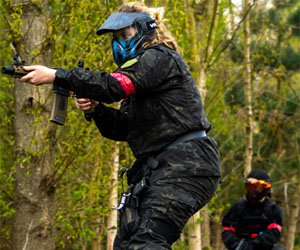 The Importance Of Precision Shots In Paintball
The Importance Of Precision Shots In Paintball
Precision shots in paintball are all about hitting your target with accuracy and effectiveness. These shots are more than just an impressive display of marksmanship; they are a fundamental aspect of the game that can have a significant impact for several reasons:
1. Conservation Of Resources: Paintballs are a finite resource, and running out of ammunition can leave you vulnerable. Making each shot count through precision shooting not only eliminates opponents but also helps conserve your paintballs for crucial moments.
2. Elimination Of Opponents: The primary objective in paintball is to eliminate opponents. Precision shots increase your chances of hitting your target, ensuring that they are eliminated from the game. Fewer opponents mean a better chance of securing victory.
3. Gaining Strategic Advantage: Precision shots can create strategic advantages by eliminating key players on the opposing team. When you take out the enemy's sharpshooters or players responsible for carrying objectives, it disrupts their plans and can lead to opportunities for your team.
4. Staying Concealed: When you hit your target with precision, they are less likely to know your exact location. This allows you to remain concealed and plan your next moves without giving away your position.
5. Winning Firefights: In one-on-one or small group firefights, precision shots can be the deciding factor.

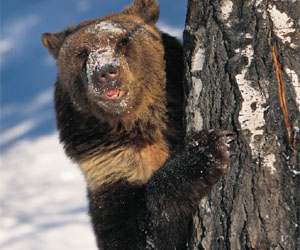

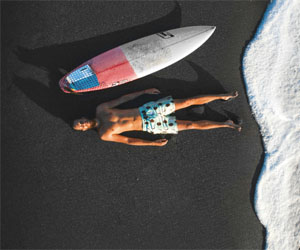


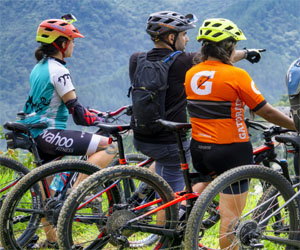 Safety First: Safety should be your top priority. Always wear a properly fitted helmet and gloves, and consider protective gear like knee and elbow pads. Ensuring that your bike has functioning brakes and reliable tires is essential for a safe ride.
Safety First: Safety should be your top priority. Always wear a properly fitted helmet and gloves, and consider protective gear like knee and elbow pads. Ensuring that your bike has functioning brakes and reliable tires is essential for a safe ride.
Choose The Right Trail: Start on beginner-friendly trails. Look for well-marked, easy-to-moderate paths that provide a comfortable introduction to mountain biking. These trails typically have fewer obstacles and gentler inclines, making them ideal for beginners.
Learn The Techniques: Mountain biking involves specific techniques that are important for both safety and enjoyment. Focus on body positioning, balance, and weight distribution to maintain control on uneven terrain. Learning to navigate obstacles, handle steep descents, and manage your speed on downhills is crucial.
Ride With Others: Riding with experienced friends or joining a beginner's group ride can be immensely helpful. You can learn from their experience and get tips on tackling obstacles or mastering techniques. Additionally, riding with others can provide a sense of camaraderie and motivation.
Gradual Progression: Don't rush your progression. As you gain confidence and skills, you can start exploring more challenging trails. It's important to understand your limits and gradually push them while staying within your comfort zone.
Be Mindful Of The Environment: Respect the natural environment and the trails you ride on. Follow trail rules and guidelines, and avoid disturbing wildlife or damaging the terrain. Leave no trace and help maintain the beauty of the outdoors.
Stay Hydrated And Fuel Up: Mountain biking can be physically demanding, so carry water and energy snacks. Staying hydrated and nourished is essential for endurance on the trail.
The Journey Into Nature's Uncharted Realms
 Preserving Pristine Beauty: Exploring untouched terrains comes with a profound responsibility: preserving the pristine beauty that makes them unique. Those who venture into these areas understand the importance of minimizing their impact, adhering to Leave No Trace principles, and becoming stewards of the environment.
Preserving Pristine Beauty: Exploring untouched terrains comes with a profound responsibility: preserving the pristine beauty that makes them unique. Those who venture into these areas understand the importance of minimizing their impact, adhering to Leave No Trace principles, and becoming stewards of the environment.
Remote And Rugged Landscapes: Untouched terrains are often found in remote and rugged landscapes. These areas are typically far from the conveniences of modern civilization, making exploration an adventure in itself. Whether trekking through dense rainforests, traversing arid deserts, or summiting towering peaks, the journey is as much a part of the experience as the destination.
Wildlife Encounters: Exploring untouched terrains often leads to remarkable wildlife encounters. These areas are havens for diverse and often rare species of animals and plants. Observing these creatures in their natural habitats is a privilege that fosters a deep connection with the natural world.
Advanced Techniques For Snowboarders
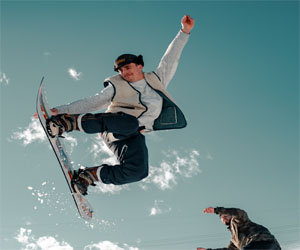 2. Riding Switch: Riding switch, also known as riding fakie, is the art of snowboarding in the opposite direction from your regular stance. To become an advanced snowboarder, you should be comfortable riding switch. Practice riding with your non-dominant foot leading and work on your balance and control to improve your overall snowboarding skills.
2. Riding Switch: Riding switch, also known as riding fakie, is the art of snowboarding in the opposite direction from your regular stance. To become an advanced snowboarder, you should be comfortable riding switch. Practice riding with your non-dominant foot leading and work on your balance and control to improve your overall snowboarding skills.
3. Terrain Park Tricks: If you're aiming to take your snowboarding to the next level, consider venturing into terrain parks. Learn tricks like ollies, spins, grabs, and board slides. Terrain parks offer an exciting playground for advanced snowboarders, allowing you to express your creativity and style while navigating jumps, rails, and other features.
4. Off-Piste Riding: Off-piste or backcountry snowboarding takes you away from the groomed slopes and into the untouched, wild terrain. Before attempting off-piste riding, it's crucial to acquire the necessary avalanche safety skills and equipment. This advanced snowboarding technique opens up a world of exploration and adventure for those who crave more than just groomed runs.
5. Navigating Steep Terrain: Advanced riders can handle steeper slopes with confidence and control. To master steep terrain, work on your balance, edge control, and body positioning. Learn to initiate quick turns and control your speed, making descents on challenging slopes feel exhilarating rather than intimidating.
6. Powder Riding: Powder snow is a snowboarder's dream. To excel in powder riding, keep your weight centered, use a wider stance, and make fluid, surf-like movements.
The Key To Longevity In Sports
 2. Proper Technique And Form: Training in the correct technique and form is crucial to preventing injuries. Athletes must learn how to execute movements and actions accurately to reduce the risk of injury.
2. Proper Technique And Form: Training in the correct technique and form is crucial to preventing injuries. Athletes must learn how to execute movements and actions accurately to reduce the risk of injury.
3. Warm-Up And Cool-Down: Effective warm-up routines prepare the body for exercise by increasing blood flow and raising body temperature. Cool-downs help the body recover and prevent muscle soreness. Both are vital components of injury prevention.
4. Nutrition And Hydration: Proper nutrition and hydration support overall health and recovery. Athletes should maintain a balanced diet to provide the necessary fuel for the body and stay well-hydrated to perform at their best.
5. Rest And Recovery: Adequate rest and recovery are critical for preventing overuse injuries. Sleep and relaxation are key to allowing the body to repair and regenerate. Overtraining can lead to fatigue and an increased risk of injury.
6. Mental Resilience: Incorporating mental health and resilience training can help athletes cope with the stress and pressure of competition. A strong mental state can also help athletes make better decisions and reduce the risk of impulsive actions that can lead to injuries.
7. Listen To The Body: Athletes must pay attention to their bodies and listen to the signals they provide. Pain, discomfort, or unusual sensations can be indicators of potential injuries. Ignoring these signals can lead to severe problems.